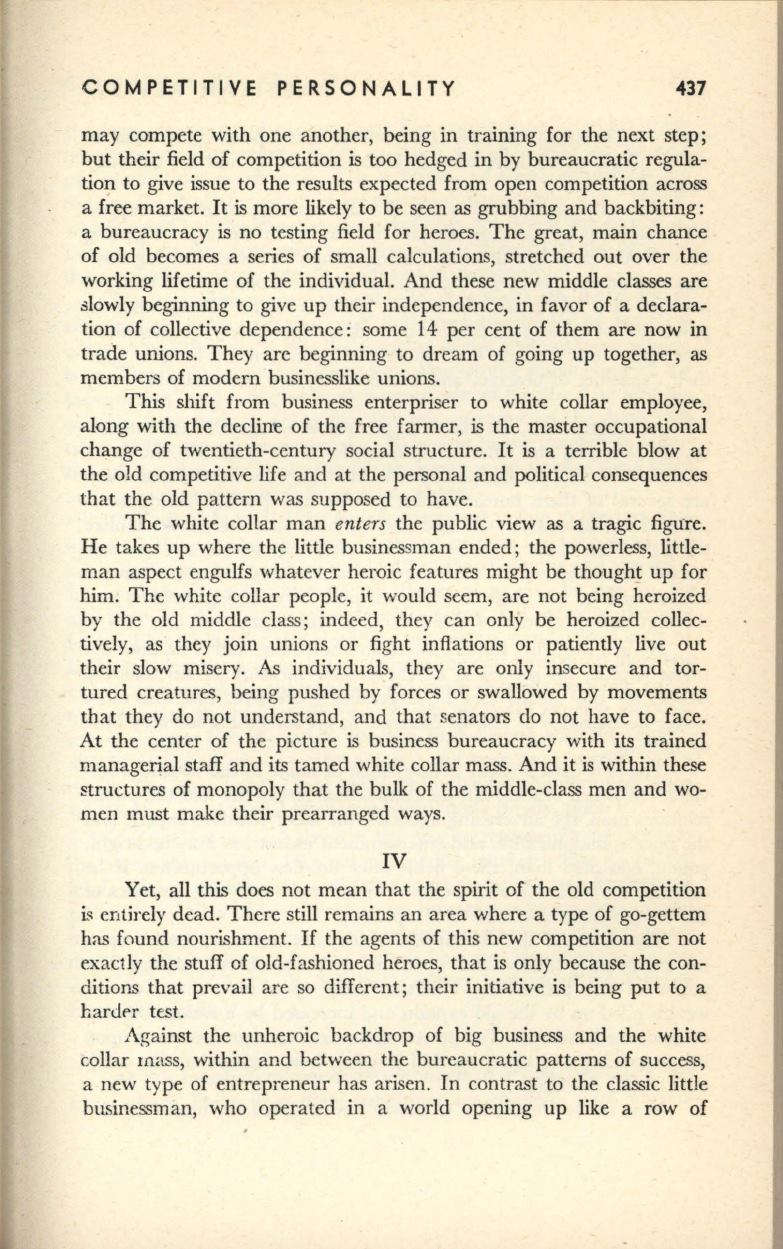
COMPETITIVE PERSONALITY
437
may compete with one another, being in training for the next step;
but their field of competition
is
too hedged in by bureaucratic regula–
tion to give issue to the results expected from open competition across
a free market. It
is
more likely to be seen as grubbing and backbiting:
a bureaucracy is no testing field for heroes. The great, main chance
of old becomes a series of small calculations, stretched out over the
working lifetime of the individual. And these new middle classes are
slowly beginning to give up their independence, in favor of a declara–
tion of collective dependence; some 14 per cent of them are now in
trade unions. They arc beginning to dream of going up together, as
members of modern businesslike unions.
This shift from business enterpriser to white collar employee,
along with the decline o£ the free farmer,
is
the master occupational
change o£ twentieth-century social structure. It is a terrible blow at
the old competitive life and at the personal and political consequences
that the old pattern was supposed to have.
The white collar man
enters
the public view as a tragic figu·re.
He takes up where the little businessman ended; the powerless, little–
man aspect engulfs whatever heroic features might be though! up for
him. The white collar people, it would seem, are not being heroized
by the old middle class ; indeed, they can only be heroized collec–
tively, as they join unions or fight inflations or patiently live out
their slow misery.
As
individuals, they are only insecure and tor–
tured creatures, being pushed by forces or swallowed by movements
that they do not understand, and that senators do not have to face.
At the center of the picture is business bureaucracy with its trained
managerial staff and its tamed white collar mass. And it is within these
structures of monopoly that the bulk of the middle-class men and wo–
men must make their prearranged ways.
IV
Yet, all this does not mean that the spirit of the old competition
is entirely dead. There still remains an area where a type of go-gettem
has found nourishment.
If
the agents of this new competition are not
exactly the stuff of old-fashioned heroes, that is only because the con–
ditions that prevail are so different; their initiative is being put to a
hardf'r test.
Against the unheroic backdrop of big business and the white
collar mass, within and between the bureaucratic patterns of success,
a new type of entrepreneur has arisen. In contrast to the classic little
businessman, who operated in a world opening up like a row of


